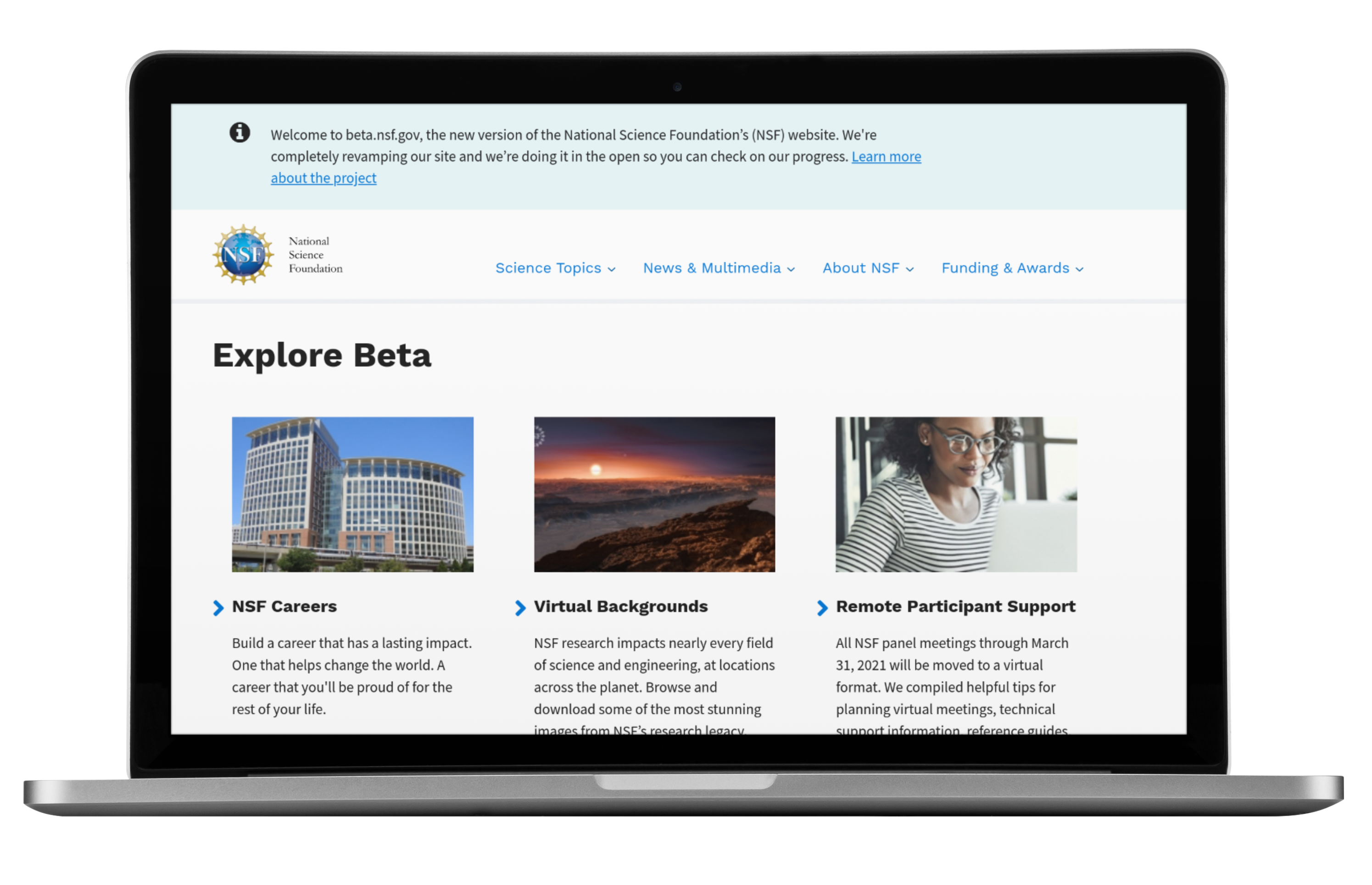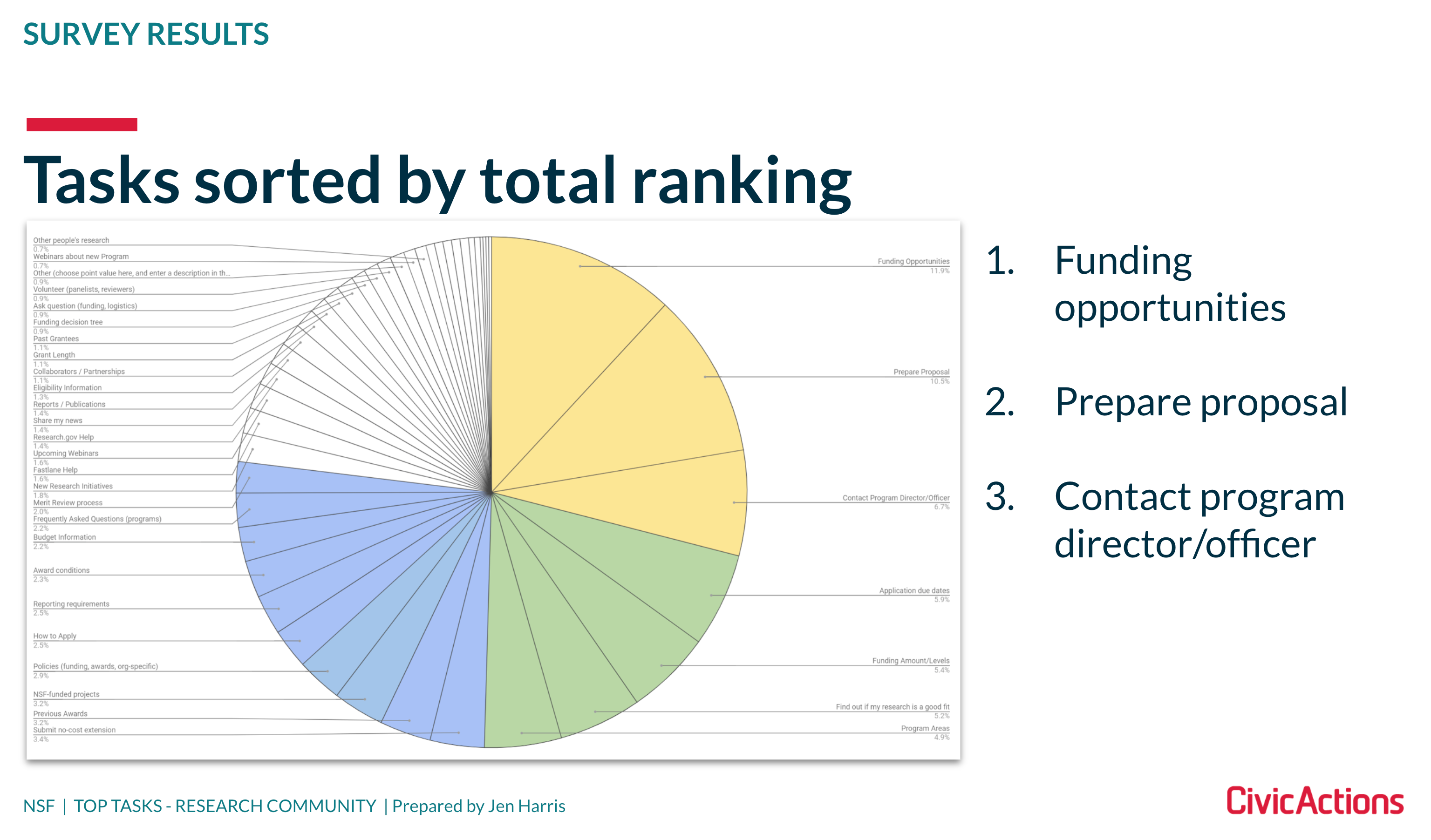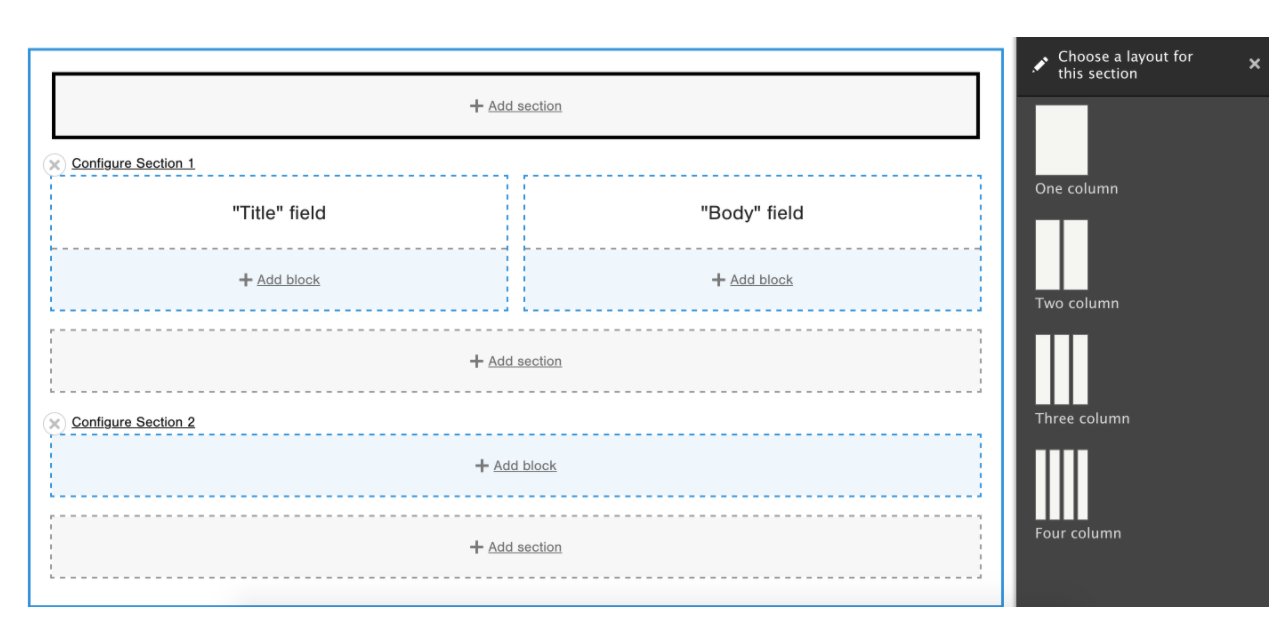A smoother path to scientific research and discovery
The National Science FoundationUsing human-centered design and the latest Drupal technology, we helped NSF build a dynamic website to advance their mission.

25
stakeholder design review cycles
350+
user research participants from over 60 organizations
2,000+
deployments and completed Jira tickets
“A few small changes in the approach saved hours and hours of Drupal development. There’s no silos. There’s no delay. When something comes through the UX process it has a developer stamp of approval.”
Kristian Ducharme | Team Technical Lead, CivicActions
The challenge
The National Science Foundation (NSF) is an independent federal agency created by Congress in 1950 to “promote the progress of science” and “advance the national health, prosperity, and welfare." With a 2021 budget of $8.5 billion, NSF accounts for over 25 percent of the total research funds awarded at U.S. colleges and universities.
CivicActions was tasked with rebuilding the entire public-facing NSF website, including implementation of all new visuals and improvement of the information architecture. By collaborating closely with stakeholders across NSF and adopting a rapid-iteration MVP approach, we regularly released prioritized features while simultaneously building the back-end infrastructure to power the ongoing full-scale migration.
Client goal
To better serve employees and the scientific community — including researchers in mathematics, computer science, social sciences, and beyond — NSF needed to replace the existing NSF.gov with a modern, flexible, cloud-hosted online experience. Primary goals were to:
- Modernize and improve the user experience for nsf.gov
- Improve funding search for colleges, researchers, and scientists
- Empower NSF staff with a new Content Management System (CMS)
- Leverage user research and testing throughout the project
Expertise
- UX Research
- UX Design
- Visual Design
- Drupal Development
- AWS Cloud Hosting Architecture Design
- DevOps Architecture / Support
- Project Management
- Drupal Training
Tools and technologies
- Drupal 8 / 9
- Sandbox mimics production
- AirTable
- Sketch
- Invision
- Mural
- SAML Authentication
- Patternlab / U.S. Web Design System
- Docker
- Kubernetes AWS EKS / RDS / ElasticSearch / S3
- Drupal Layout Builder, Groups
Our approach
To support timelines for a public launch, we took an “MVP approach” by launching a beta site with a small, prioritized set of functionalities. As new pages and features are built, the site continues to develop over time, in the open. This approach requires rapid prototyping and iteration, frequent testing, and continuous engagement with stakeholders.
Start by understanding the needs
After some initial design discovery, NSF engaged CivicActions in September of 2018 to begin a site-wide redesign and migration. The legacy NSF.gov site — built mostly in static HTML — was hard to manage and laborious to update. We knew a scalable, flexible CMS solution was needed, so we got right to work on development and design — starting the site infrastructure, building the initial set of components, and kicking off design research.

Deliver fast and improve continually
By the spring of 2019, we’d launched beta.nsf.gov and established an iterative, MVP-based approach that allowed our design and development team to release and test content with static data while continuing to build out the site infrastructure. Later that year, we released an updated Careers portal on https://beta.nsf.gov/careers, and began research on the Funding portal and the Funding Search feature.

Improve organizational processes
Working closely with NSF stakeholders, we continued to steadily test and release features, launching the Science Matters blog and an updated top level menu in February 2020. By the fall, we integrated the Pims Rest API to streamline NSF’s online program management, and deployed the Drupal Layout Builder tool that allows content editors to drag and drop content as they build and publish pages.

Partnership for public good
In 2021, after extensive research, testing and iteration, the updated Funding Search Portal will be launched in June — creating a simpler, quicker way to fund the research that powers the U.S. scientific community. Additionally that year, CivicActions was awarded a $44 million contract extension to continue supporting this important work. As we look to the future with a growing team and ambitious goals, we are grateful for our ongoing partnership with NSF.
Key outcomes
Fast delivery of value
Our “MVP approach” helped NSF launch their new site sooner, with ongoing improvements being made in the open. Public feedback is welcome along the way.
Ongoing Drupal upgrades
As we continue to migrate the site, we will scan all modules for deprecated code, contribute patches to Drupal.org, refactor theming for Twig 2 compatibility, and perform core updates to Drupal 9.x.
Automated testing
To check the updated codebase for failures and disrupted user paths, we run automated tests including accessibility scanners, security, unit testing, behavioral testing, and code quality.
Confident deployments
Through 73 sprints, 2,000 deployments, and over 2,000 Jira tickets, the abundance of automation and testing gives us confidence in our code.
Research-based solution
Because NSF invested in broad user research and testing, they can be confident that their new site meets the real needs of the scientific community and the organization stakeholders.
Taxpayer savings
The intuitive new content management system allows NSF staff to publish and update helpful information quickly and easily. The time they’re saving can be reinvested into other mission-critical work.













